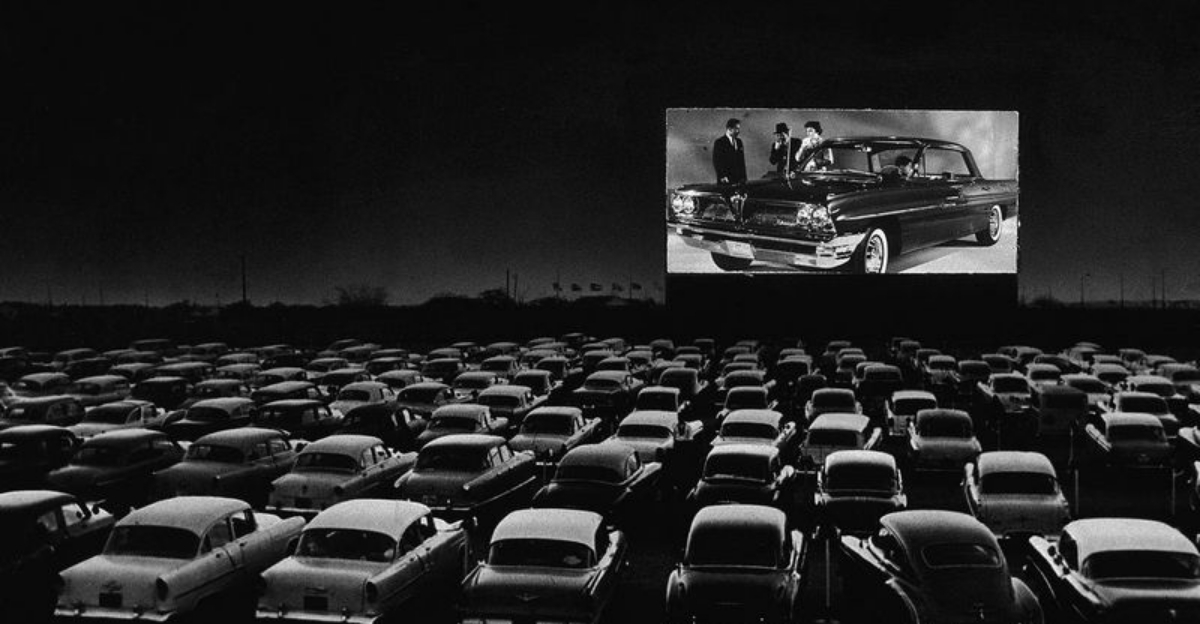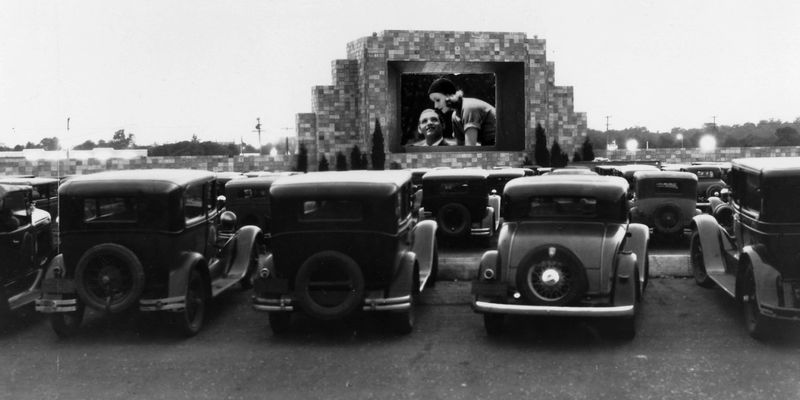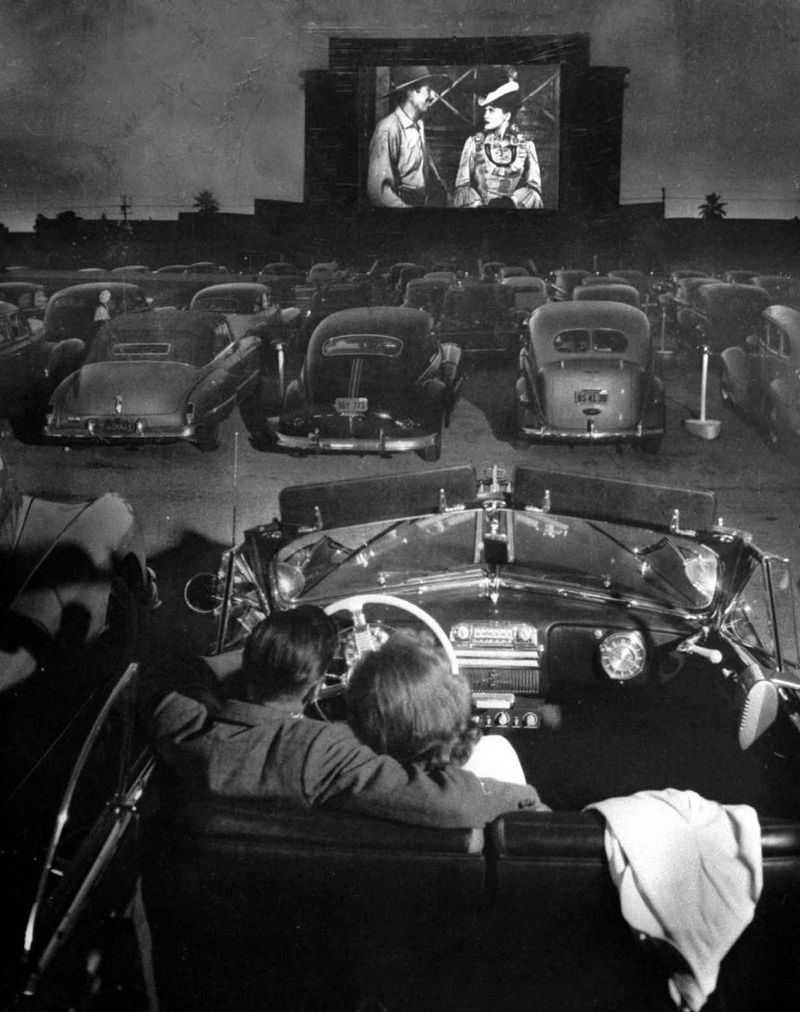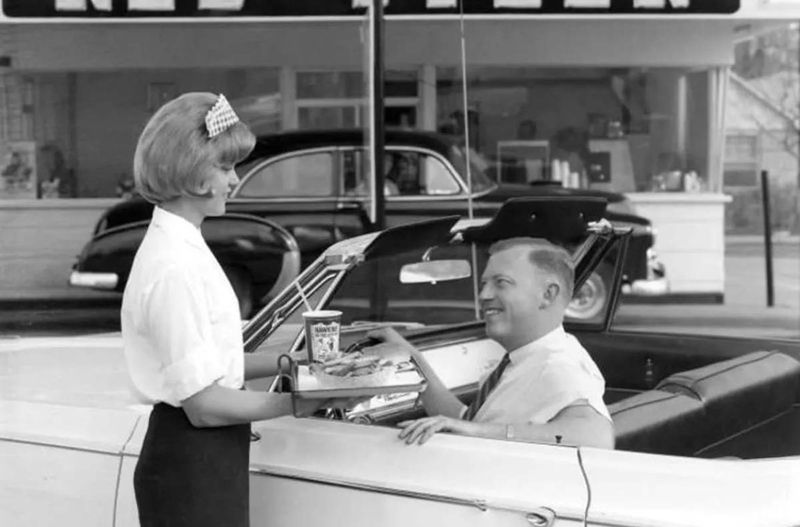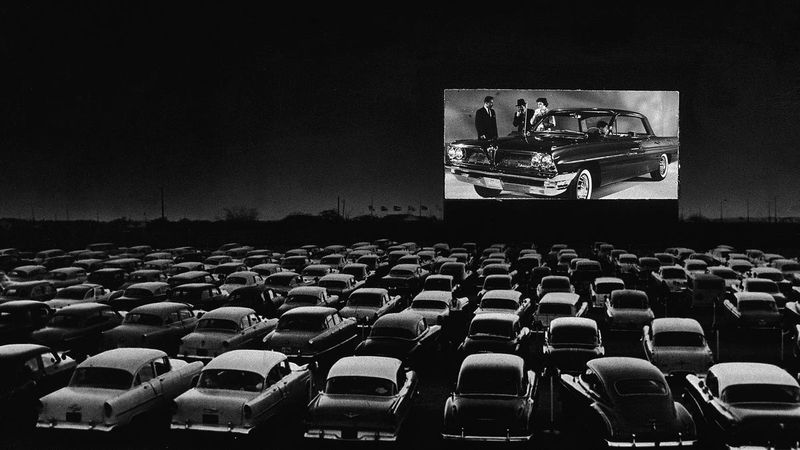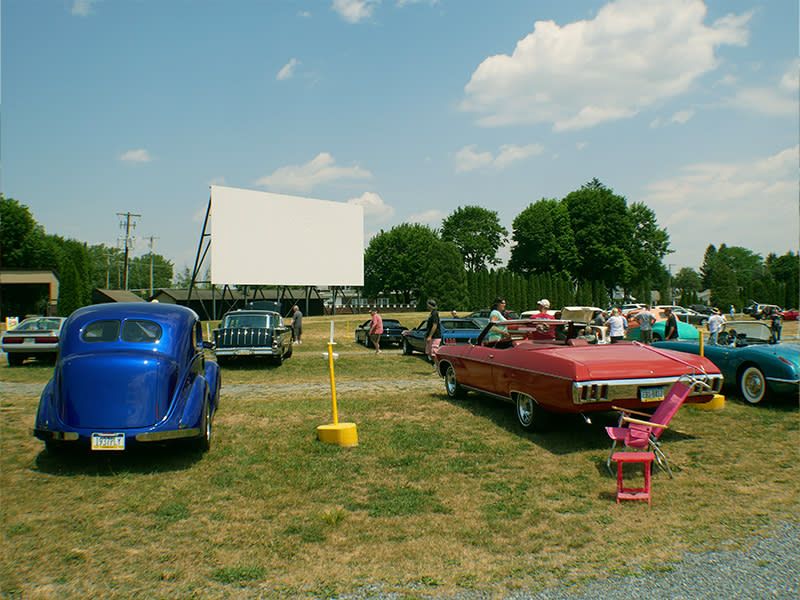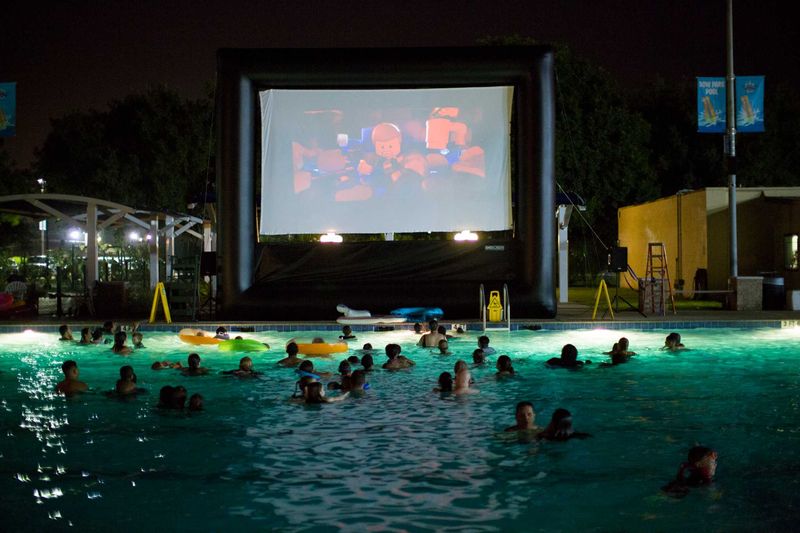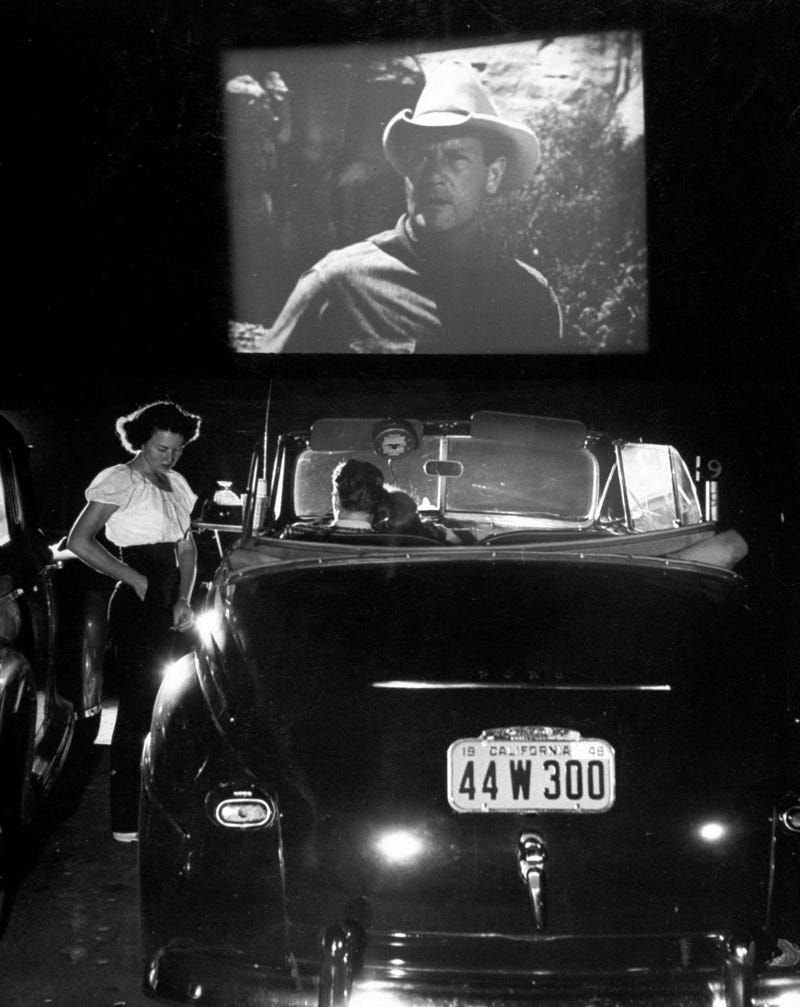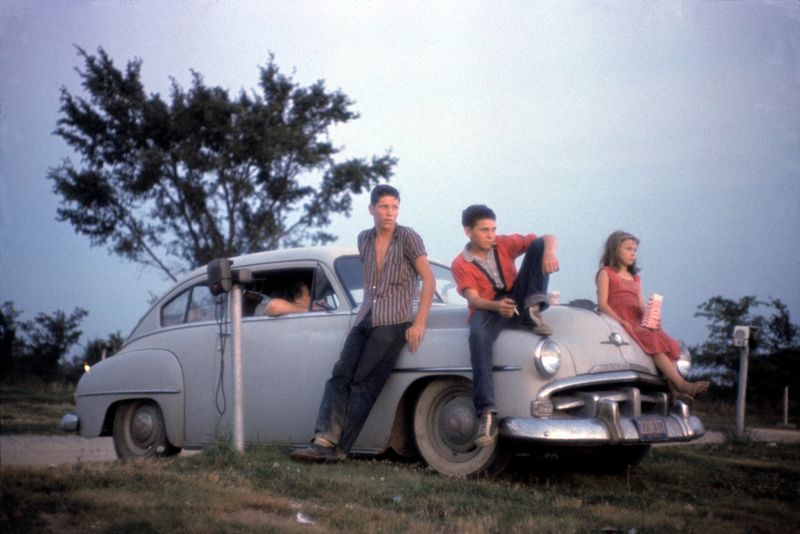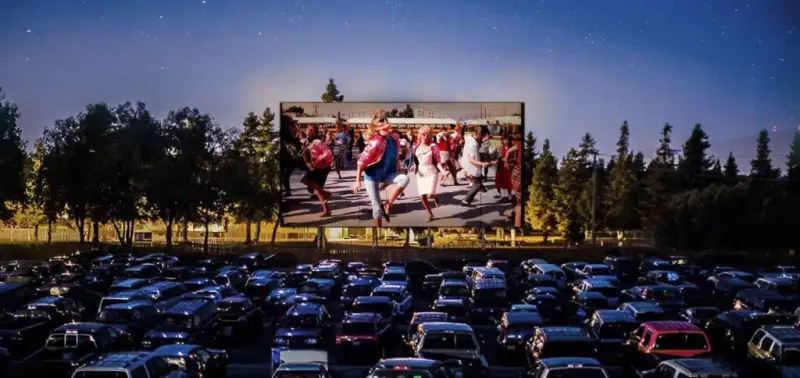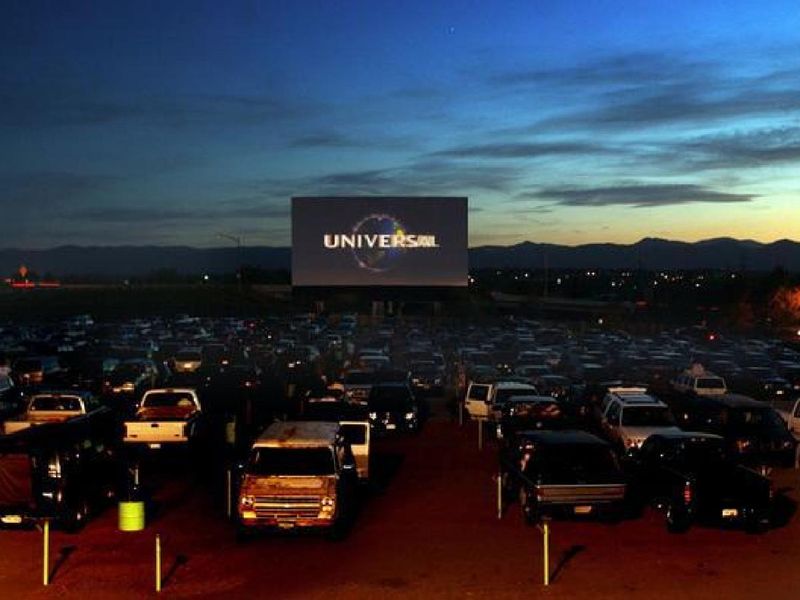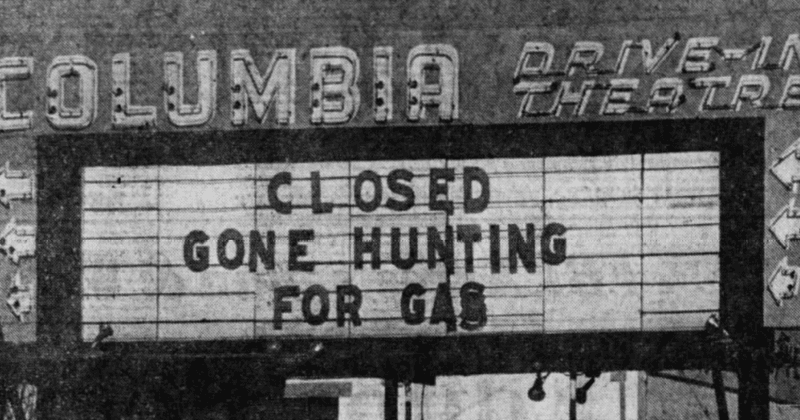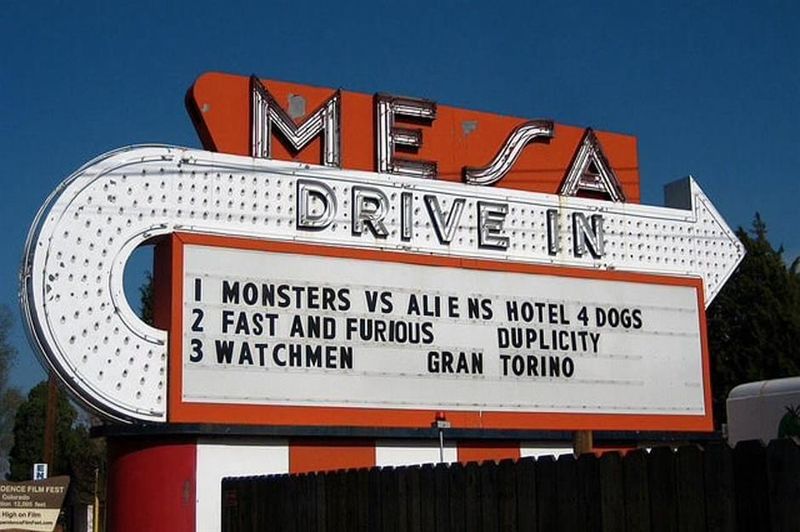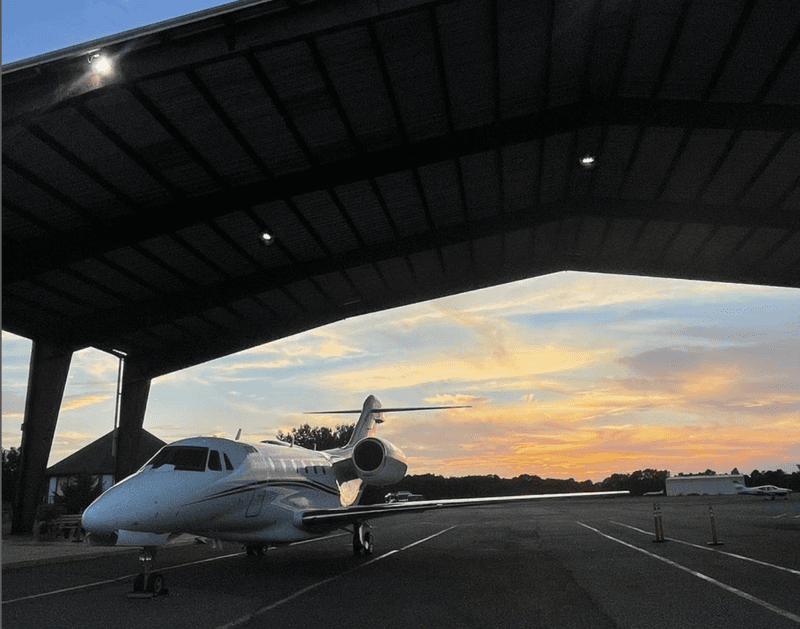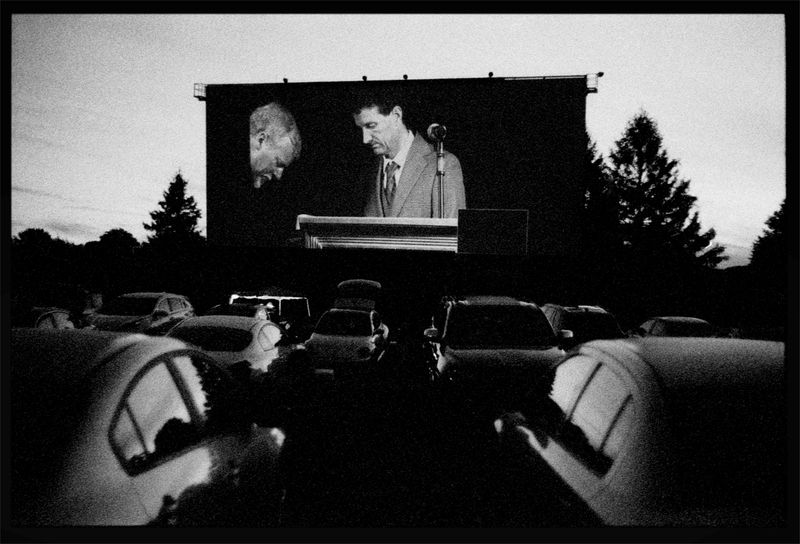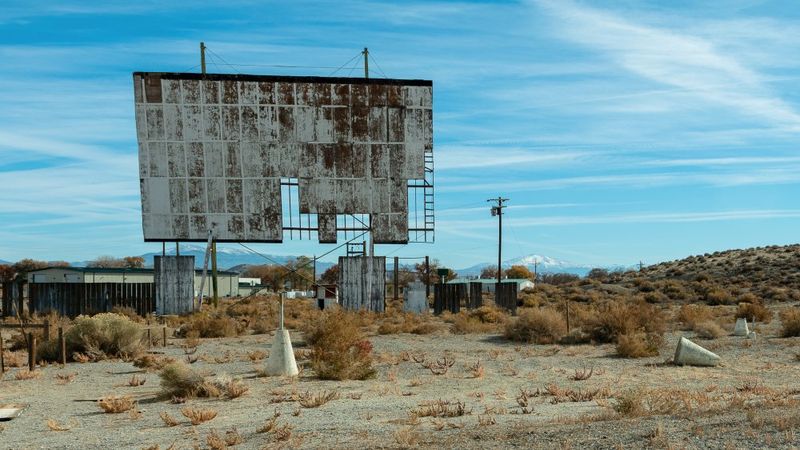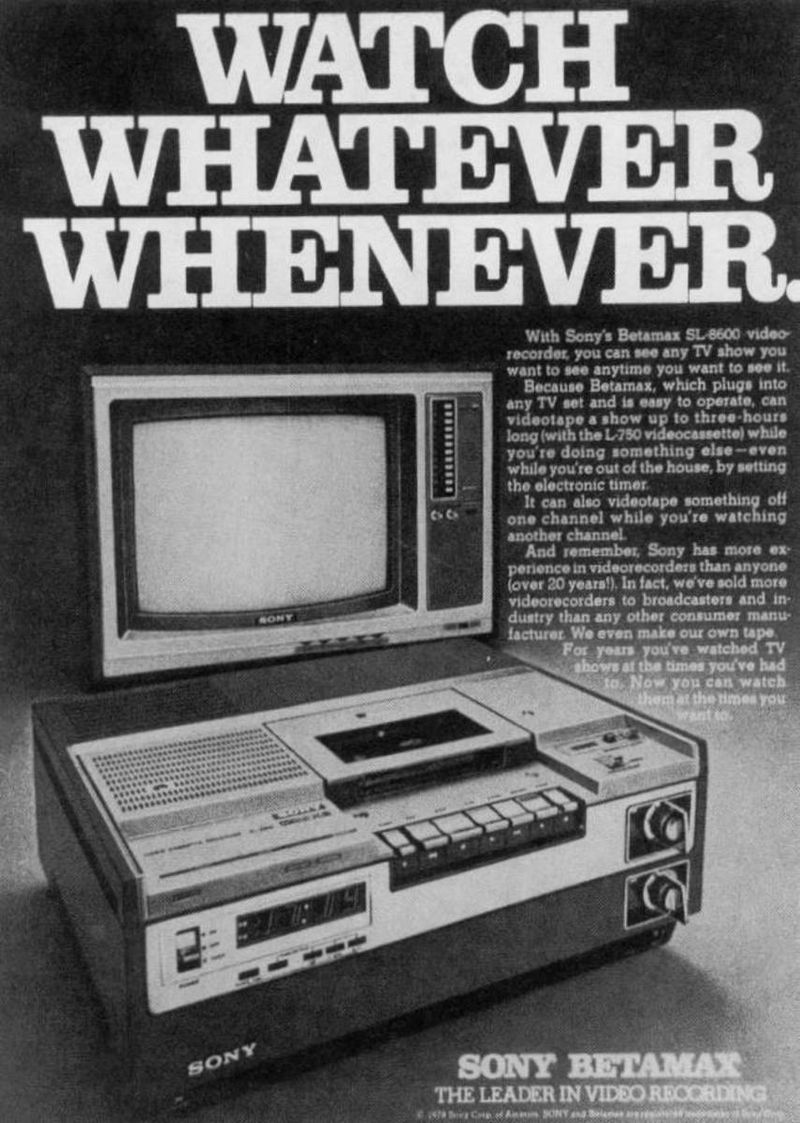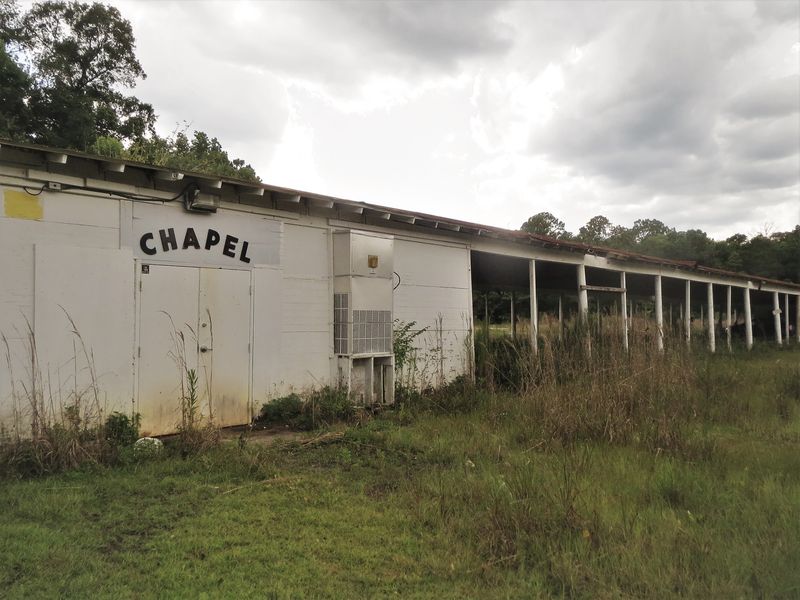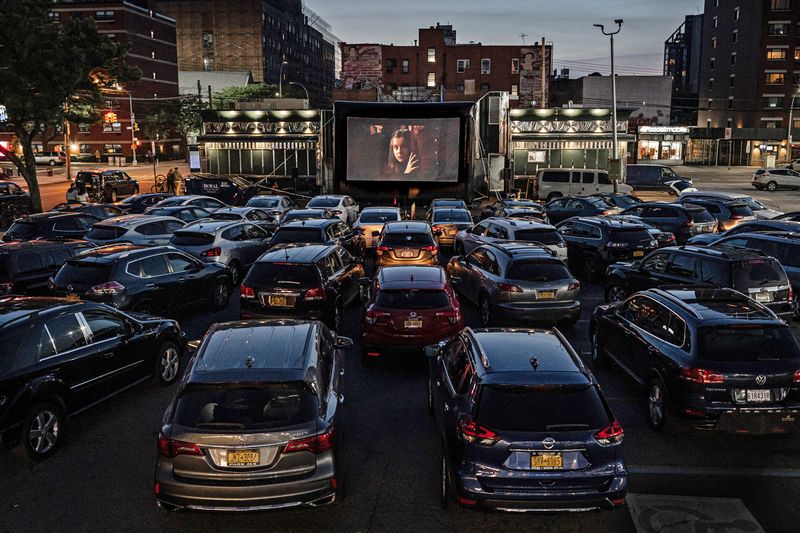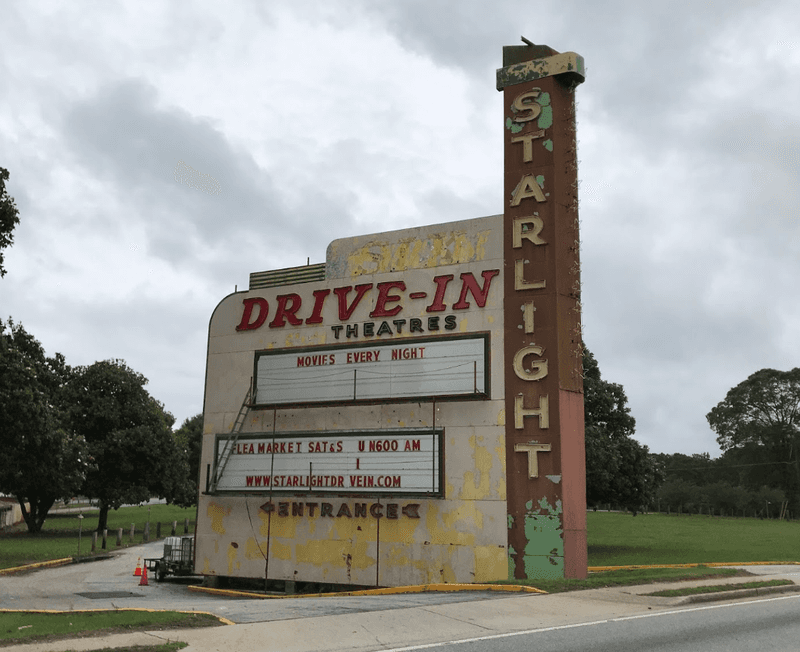Discover the fascinating world of drive-in theaters, where nostalgia meets innovation. These outdoor cinematic experiences have a rich history filled with quirky facts, surprising features, and cultural impacts that are often overlooked.
From their humble beginnings in New Jersey to becoming a beloved American pastime, drive-ins offer a unique blend of entertainment and community.
This list uncovers 20 intriguing aspects of drive-in theaters that you probably never knew, inviting you to explore the magic and mystery behind these iconic venues.
1. The First Drive-In Opened in 1933—and It Was in New Jersey
In 1933, Richard Hollingshead, a resourceful entrepreneur from Camden, New Jersey, introduced the world to the first drive-in theater. Inspired by his mother’s difficulty sitting in traditional theater seats, he devised a way for people to enjoy movies from the comfort of their cars.
The concept was simple yet revolutionary: cars parked in a field facing a large screen, where families could watch films while staying cozy in their vehicles.
Hollingshead’s innovation laid the groundwork for a cultural phenomenon that would sweep across America, offering a new way to experience cinema under the open sky.
2. They Were Originally Marketed to Families with Loud Children
Drive-in theaters quickly found their niche among families with young, energetic children. Unlike traditional theaters, parents didn’t have to worry about keeping their kids quiet or still.
The car provided a private space where kids could be themselves without disturbing others.
This family-friendly environment became a selling point, turning drive-ins into a haven for parents seeking affordable entertainment without the need for a babysitter.
Advertisements of the era often highlighted the benefits of a family outing where children could enjoy the movie experience on their own terms.
3. Some Drive-Ins Offered Car-Side Food Service—Like Classic Diners
Imagine the convenience of a classic diner brought right to your car window! Many drive-ins enhanced the moviegoing experience by offering car-side food service, complete with trays that clipped onto car windows.
From burgers and fries to popcorn and soda, these offerings added a touch of culinary delight to the cinematic night out.
The combination of great food and entertainment made drive-ins a popular choice for families and date nights alike, providing a full evening of leisure and enjoyment without ever leaving the comfort of your car.
4. There Were Once Over 4,000 Drive-Ins Across the U.S.
In the 1950s, drive-in theaters reached the pinnacle of their popularity, with over 4,000 scattered across the United States. These venues became an integral part of American culture, especially in rural areas where indoor theaters were scarce.
The vast open spaces required for drive-ins were readily available in these regions, making them the ideal setting for this type of entertainment.
By providing a novel and accessible way to enjoy movies, drive-ins played a significant role in shaping the cinematic landscape of the era, leaving a lasting legacy on American soil.
5. Many Drive-Ins Were Also Miniature Amusement Parks
Drive-in theaters were more than just a place to watch movies; they were a destination for family fun. To attract audiences, many drive-ins added amusement park-like attractions such as playgrounds, pony rides, and even go-karts.
These additional features turned a simple movie night into a full-fledged outing. By arriving early, families could enjoy a variety of activities before settling down for the film, creating lasting memories.
This inventive approach to entertainment helped drive-ins stand out as multifaceted venues catering to all ages.
6. You Could Watch a Movie and Go for a Swim
In an unexpected blend of leisure activities, some drive-in theaters offered on-site swimming pools. Moviegoers could enjoy a refreshing dip while watching a film, combining two popular pastimes into one unique experience.
This innovative feature provided a special appeal during hot summer nights, allowing audiences to cool off and relax as they enjoyed the latest blockbuster.
The combination of cinema and swimming added a touch of novelty and fun, turning drive-ins into an all-encompassing entertainment hub that catered to a wide range of interests.
7. There Were “Adult” Drive-In Theaters, Too
Not all drive-ins catered exclusively to family audiences. Some specialized in adult-oriented films, providing a more mature cinematic experience after dark. These theaters offered privacy and discretion, allowing couples to enjoy films that were not suitable for younger viewers.
The allure of adult drive-ins lay in their ability to provide a space where audiences could explore different genres and themes, contributing to the diversity of the drive-in experience.
While these venues were fewer in number, they represented an important facet of the drive-in theater landscape.
8. They Were a Popular Date Spot for Teenagers in the ’50s and ’60s
With their romantic and secluded setting, drive-in theaters became the quintessential date spot for teenagers in the ’50s and ’60s. The privacy of the car provided an intimate environment, perfect for young couples looking to enjoy a movie under the stars.
The atmosphere was relaxed and unpretentious, making it an ideal location for shy teenagers to spend quality time together.
This reputation as a favored dating venue added to the cultural allure of drive-ins, cementing their status as an iconic part of teenage life during this era.
9. Some Screens Were the Size of a Small Building
Drive-in theater screens were nothing short of colossal. Standing as tall as small buildings, these massive screens ensured that every patron, no matter where they parked, had an unobstructed view of the film.
The immense size of the screens was a marvel in itself, contributing to the grandeur and spectacle of the drive-in experience.
These towering structures became landmarks in their own right, visible from miles away and symbolizing the boldness of outdoor cinema. The sheer scale added to the magic and allure of watching movies under the open skies.
10. Weather Was a Constant Battle—And Snow Wasn’t the Worst
While snow posed a challenge for drive-ins, it was often fog and humidity that proved most troublesome. These weather conditions blurred the screen, making it difficult for audiences to enjoy the movie.
Drive-in operators had to be inventive, often pausing films during heavy fog and resuming once visibility improved. Despite these hurdles, the charm of viewing films outdoors kept patrons returning, weather notwithstanding.
The battle against the elements added an unpredictable element to the drive-in experience, making each visit unique and memorable.
11. They Boomed During World War II, Thanks to Gas Rationing
World War II saw drive-in theaters flourish as gas rationing encouraged Americans to seek local entertainment options. With long trips out of the question, drive-ins provided a perfect solution, offering an escape without the need for extensive travel.
The convenience of nearby entertainment made drive-ins a staple of wartime leisure, providing a morale boost during challenging times.
Their ability to adapt to the constraints of the era demonstrated the resilience and innovation that defined drive-in theaters, cementing their place in American history.
12. Drive-In Radios Weren’t Always Reliable
In the early days of drive-ins, sound quality was often a hit or miss. Instead of FM radio broadcasts, patrons listened to movies through speakers that hung on car windows.
These devices were notorious for crackling, cutting out, or even being accidentally driven away with!
Despite the quirks, there was a certain charm to this early technology. The communal experience of adjusting and fine-tuning the sound added another layer to the drive-in adventure, where part of the fun was working together to create the perfect movie night.
13. Drive-Ins Helped Popularize B-Movies and Cult Classics
Drive-in theaters became the breeding ground for B-movies and cult classics, giving these genres a unique platform to shine. Low-budget horror, sci-fi, and exploitation films found a receptive audience in the relaxed drive-in atmosphere.
These theaters offered filmmakers a way to reach audiences without the financial barriers of mainstream cinema.
As a result, drive-ins helped cultivate a diverse cinematic landscape, where daring and creative films flourished. The legacy of these cult classics continues to influence filmmakers and movie enthusiasts today.
14. There Was Once a Drive-In for Airplanes
Believe it or not, there was a drive-in theater specifically designed for airplane pilots! Located in Asbury Park, New Jersey, this “skyport” drive-in allowed pilots to taxi their small planes to a designated area where they could watch films.
This novelty attraction became a unique part of drive-in folklore, showcasing the creative lengths to which theater owners would go to attract visitors.
While it may have been short-lived, the airplane drive-in remains a quirky chapter in the history of outdoor cinema, highlighting the innovative spirit of the era.
15. In the ’70s, They Became Havens for Counterculture Films
By the 1970s, drive-ins had become a sanctuary for counterculture films, where grindhouse, kung fu, and experimental movies found their audience.
These theaters embraced the edgy and unconventional, offering a space for films that broke away from mainstream norms.
The relaxed and open atmosphere of drive-ins allowed for a more diverse range of programming, appealing to a wide spectrum of moviegoers.
This era of drive-in history was marked by a spirit of rebellion and creativity, where audiences could explore bold and groundbreaking cinema.
16. They Slowly Disappeared Due to Rising Land Values
As land values soared, many drive-in theaters faced an uncertain future. The large plots of land required for these venues became prime real estate, leading to their gradual disappearance.
Developers sought these expansive lots for housing or commercial projects, making it financially unviable to maintain drive-ins.
While some theaters managed to adapt or relocate, many were forced to close, marking the end of an era for a beloved American institution. The loss of drive-ins reflects broader changes in urban development and land use priorities.
17. The Rise of Home Video Was a Final Blow
The advent of home video in the 1980s brought new challenges to drive-in theaters. With the convenience of VHS tapes and VCRs, families could enjoy movies from the comfort of their homes, reducing the demand for outdoor cinema.
This technological shift marked a significant turning point in movie consumption, where the allure of staying in often outweighed the experience of going out.
The rise of home video was a tipping point for many drive-ins, signaling the end of an era as audiences embraced the new way to watch films.
18. Some Were Converted into Flea Markets or Churches
Faced with dwindling attendance, some drive-ins found new life by repurposing their expansive lots. Flea markets, with their need for large open spaces, became a popular alternative use for these sites.
Similarly, some theaters transformed into places of worship, providing a unique setting for congregations. This ability to adapt highlighted the versatile nature of drive-in spaces, allowing them to continue serving communities in different ways.
These transformations reflect the resilience and creativity required to survive in a changing landscape.
19. COVID-19 Briefly Revived Interest in Drive-Ins
The COVID-19 pandemic brought an unexpected resurgence in drive-in theaters. With social distancing measures in place, these venues became a safe entertainment option, allowing people to enjoy movies while staying within their own vehicles.
This modern revival highlighted the enduring appeal of drive-ins, demonstrating their ability to adapt to contemporary needs.
While the pandemic posed challenges, it also provided an opportunity for drive-ins to showcase their unique advantages, reminding audiences of the magic of outdoor cinema under the stars.
20. A Handful of Vintage Drive-Ins Still Operate Today
Though many drive-ins have faded into history, a select few continue to operate, preserving the nostalgic charm of outdoor cinema. These family-run establishments offer a glimpse into the past, maintaining the vintage atmosphere that made drive-ins beloved.
With retro movie screenings and classic car gatherings, these theaters celebrate a bygone era while adapting to modern tastes.
Their survival is a testament to the enduring appeal of drive-ins and the dedicated communities that support them. These venues stand as living monuments to a cherished piece of Americana.
